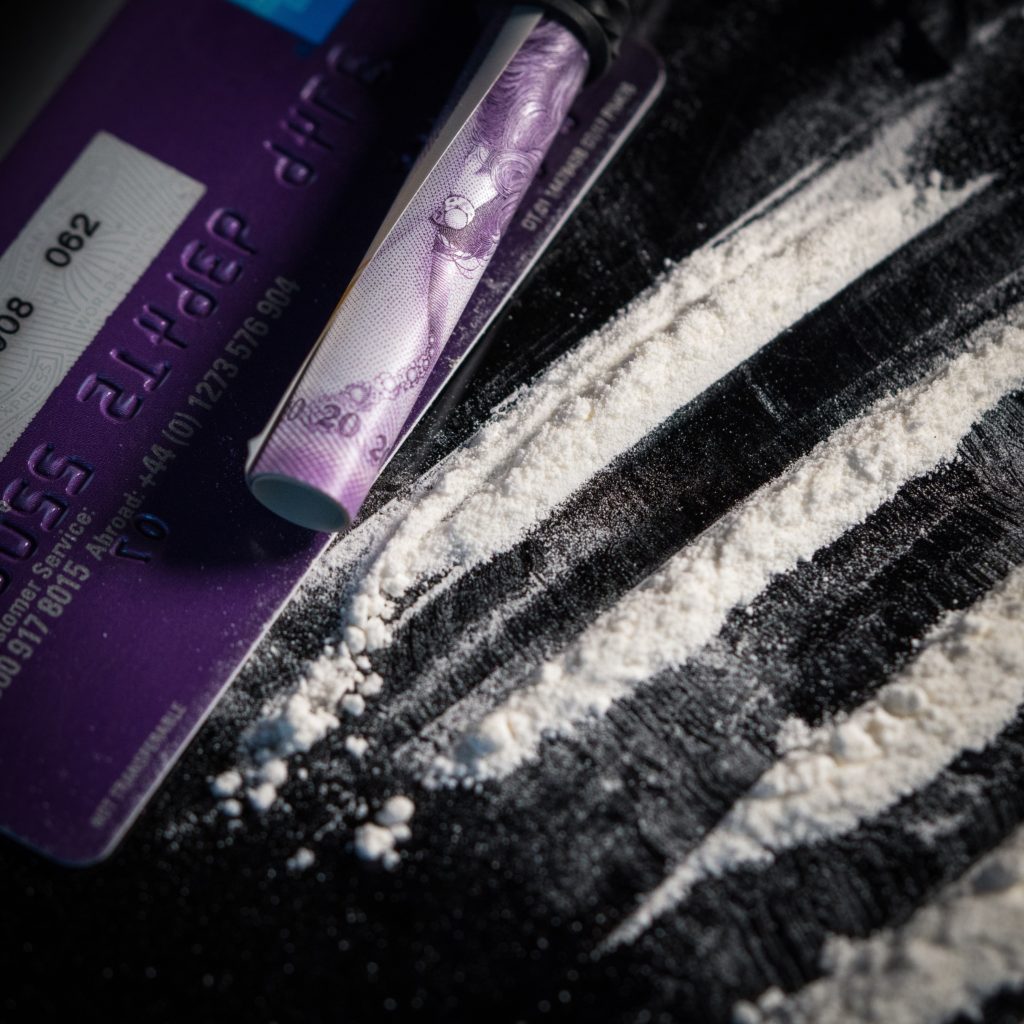What are narcotics?
Also known as “opioids,” the term “narcotic” comes from the Greek word for “stupor” and originally referred to a variety of substances that dulled the senses and relieved pain. Though some people still refer to all drugs as “narcotics,” today “narcotic” refers to opium, opium derivatives, and their semi-synthetic substitutes. A more current term for these drugs, with less uncertainty regarding its meaning, is “opioid.” So, is heroin a narcotic? Yes, examples of narcotics include illicit drug heroin, and pharmaceutical drugs like OxyContin®, Vicodin®, codeine, morphine, methadone, and fentanyl.
What is their origin?
The poppy Papaver somniferum is the source of all-natural opioids, whereas synthetic opioids are made entirely in a lab and include meperidine, fentanyl, and methadone. Semi-synthetic opioids are synthesized from naturally occurring opium products, such as morphine and codeine, and include heroin, oxycodone, hydrocodone, and hydromorphone. Teens can obtain narcotics from friends, family members, medicine cabinets, pharmacies, nursing homes, hospitals, hospices, doctors, and the Internet.

What are common street names?
Street names for various narcotics/opioids include:
- MPTP (New Heroin)
- Hillbilly
- Heroin
- Lean or Purple Drank
- OC
- Ox
- Oxy
- Sippin Syrup
- Smack
- Horse
- Mud
- Brown Sugar
- Junk, Black Tat
- Big H, Paregoric
- Dover’s Powder
- Oxycotton
What do they look like?
Is Heroin A Narcotic? Narcotics/opioids come in various forms, including:
- Tablets
- Capsules
- Skin patches
- Powder
- Chunks in varying colors (from white to shades of brown and black)
- Liquid form for oral use and injection
- Syrups
- Suppositories
- Lollipops
How are they abused?
Narcotics/opioids can be:
- Swallowed
- Smoked
- Snorted
- Injected
What is their effect on the mind?
Besides their medical use, narcotics/opioids produce a general sense of well-being by reducing tension, anxiety, and aggression. These effects are helpful in a therapeutic setting but contribute to drugs abuse. Narcotic/opioid use comes with a variety of unwanted effects, including drowsiness, inability to concentrate, and apathy.
Is Heroin A Narcotic?
Narcotics/opioids are controlled substances that vary from Schedule I to Schedule V, depending on their medical usefulness, abuse potential, safety, and drug dependence profile. Schedule I narcotics, like heroin, have no medical use in the U.S. and are illegal to distribute, purchase, or use outside of medical research.
How does heroin addiction work?
As we mentioned before, heroin is a highly addictive drug. That’s because people who regularly use heroin often develop a tolerance, which means that they need higher and/or more frequent doses of the drug to get the desired effects. A substance use disorder (SUD) is when continued use of the drug causes issues, such as health problems and failure to meet responsibilities at work, school, or home. A SUD can range from mild to severe, the most severe form being addiction.
As stated by The National Institute on Drug Abuse, in the piece ‘Heroin DrugFacts’, Those who suffer from Heroin Addiction and stop using the drug abruptly may have severe withdrawal. Withdrawal symptoms, which can begin as early as a few hours after the drug was last taken, include:
- Restlessness
- Severe muscle and bone pain
- Sleep problems
- Diarrhea and vomiting
- Cold flashes with goosebumps (‘Cold turkey’)
- Uncontrollable leg movements (‘Kicking the habit’)
- Severe heroin cravings

On the authority of the scientific piece ‘[Heroin Addiction]’, Sándor Hosztafi, published by The National Library of Medicine, recent research has shown that “major withdrawal symptoms peak between 48 and 72 hours after the last dose of heroin and subside after about a week. At this time, weakness and depression are pronounced and nausea and vomiting are common. Nevertheless, some chronic addicts have shown persistent withdrawal signs for many months or even years. Heroin Addiction is considered a behavioral state of compulsive drug use and a high tendency to relapse after periods of abstinence.
Researchers are studying the long-term effects of opioid addiction on the brain. Studies have shown some loss of the brain’s white matter associated with heroin use, which may affect decision-making, behavior control, and responses to stressful situations.
Heroin Addiction Symptoms
Heroin enters the brain rapidly and binds to opioid receptors on cells located in many areas, especially those involved in feelings of pain and pleasure and in controlling heart rate, sleeping, and breathing.
Short-term effects:
People report feeling a “rush” (a surge of pleasure, or euphoria) when using Heroin. Nevertheless, there are other short-term symptoms of this drug, this can include:
- Dry mouth
- Warm flushing of the skin
- Heavy feeling in the arms and legs
- Nausea and vomiting
- Severe itching
- Clouded mental functioning
- Going “on the nod,” a back-and-forth state of being conscious and semiconscious.

Long-term effects:
People who consume heroin may develop the following conditions over time, be careful of these signs:
- Insomnia
- Collapsed veins for people who inject the drug
- Damaged tissue inside the nose for people who sniff or snort it
- Infection of the heart lining and valves
- Abscesses (swollen tissue filled with pus)
- Constipation and stomach cramping
- Liver and kidney disease
- Lung complications, including pneumonia
- Mental disorders such as depression and antisocial personality disorder
- Sexual dysfunction for men
- Irregular menstrual cycles for women
Heroin often contains additives, such as sugar, starch, or powdered milk, that can clog blood vessels leading to the lungs, liver, kidneys, or brain, causing permanent damage. Also, sharing drug injection equipment and having impaired judgment from drug use can increase the risk of contracting infectious diseases such as HIV and hepatitis.
Heroin Overdose
Heroin Addiction can easily lead a person to overdose from this drug because of its way of making people want more and more of the substance. A heroin overdose occurs when a person uses enough of the drug to produce a life-threatening reaction or death.
When people overdose on heroin, their breathing often slows or stops. This can decrease the amount of oxygen that reaches the brain, a condition called hypoxia. Hypoxia can have short- and long-term mental effects and effects on the nervous system, including coma and permanent brain damage.
Heroin Overdose Treatment
According to the National Institute on Drug Abuse, there’s a specific medicine called Naloxone that can save the life of someone who’s overdosing. Naloxone is a medicine that can treat an opioid overdose when given right away. It works by rapidly binding to opioid receptors and blocking the effects of heroin and other opioid drugs. Sometimes more than one dose may be needed to help a person start breathing again, which is why it’s important to get the person to an emergency department or a doctor to receive additional support if needed.
Naloxone is available as an injectable (needle) solution and nasal sprays (NARCAN® Nasal Spray and KLOXXADO®). Friends, family, and others in the community can use the nasal spray versions of naloxone to save someone who is overdosing. The rising number of opioid overdose deaths has led to an increase in public health efforts to make Naloxone available to at-risk persons and their families, as well as first responders and others in the community. Some states have passed laws that allow pharmacists to dispense naloxone without a prescription from a person’s personal doctor.

Prescription Opioids and Heroin Addiction
Prescription opioid pain medicines such as OxyContin® and Vicodin® have effects similar to heroin. Research suggests that misuse of these drugs may open the door to heroin use. Data from 2011 showed that an estimated 4 to 6 percent who misuse prescription opioids switch to heroin and about 80 percent of people who used heroin first misused prescription opioids. More recent data suggest that heroin is frequently the first opioid people use. In a study of those entering treatment for opioid use disorder, approximately one-third reported heroin as the first opioid they used regularly to get high.
Heroin Addiction Treatment
Treatment for Heroin Addiction includes medical treatments and behavioral therapies. For a treatment to be effective, it’s important to match the best treatment approach to meet the particular needs of each patient. Medicines are being developed to help with the withdrawal process. The FDA approved lofexidine, a non-opioid medicine designed to reduce opioid withdrawal symptoms.
Medicines to help people stop using heroin include Buprenorphine and Methadone. They work by binding to the same opioid receptors in the brain as heroin, but more weakly, reducing cravings and withdrawal symptoms. Another treatment is Naltrexone, which blocks opioid receptors and prevents opioid drugs from having an effect. A NIDA study found that once treatment is initiated, both a Buprenorphine/Naloxone combination and an extended release Naltrexone formulation are similarly effective in addiction. Because full detoxification is necessary for treatment with naloxone, initiating treatment among active users was difficult, but once detoxification was complete, both medications had similar effectiveness.
Behavioral therapies for Heroin Addiction include methods called Cognitive-Behavioral therapy and contingency management. Cognitive-Behavioral therapy helps modify the patient’s drug-use expectations and behaviors, and helps effectively manage triggers and stress. Contingency Management provides motivational incentives, such as vouchers or small cash rewards for positive behaviors such as staying drug-free. These Behavioral Treatment approaches are especially effective when used along with medicines.
National Institute on Drug Abuse
Heroin Withdrawal Symptoms
Users begin experiencing heroin withdrawal between 6 and 12 hours after their last dose. Withdrawal from heroin may resemble those of prescription opioids. Because heroin leaves the user’s system faster than painkillers do, withdrawal comes about more quickly. Heroin Withdrawal often feels like a horrible case of the flu. The worst pain and discomfort lasts a week — about as long as the bad flu — with withdrawal symptoms peaking during the second or third day.
Reclaim your life from Heroin Addiction
Is heroin a narcotic? Yes, examples of narcotics include illicit drug heroin. Heroin Addiction is a serious condition that should not be taken lightly. We Level Up California rehab institute can provide you, or someone you love, the tools to recover from addiction with professional and safe treatment. Feel free to call us to speak with one of our counselors. We can inform you about this condition by giving you relevant information. Our specialists know what you are going through. Please know that each call is private and confidential.
Sources
[1] DEA. Drug Fact Sheet: Narcotics.
[2] ‘Heroin’ – National Library of Medicine (Medlineplus.gov)
[3] ‘Heroin DrugFacts’ – The National Institute on Drug Abuse (drugabuse.gov)
[4] ‘[Heroin Addiction]’, Sándor Hosztafi, National Library of Medicine (pubmed.ncbi.nlm.nih.gov)